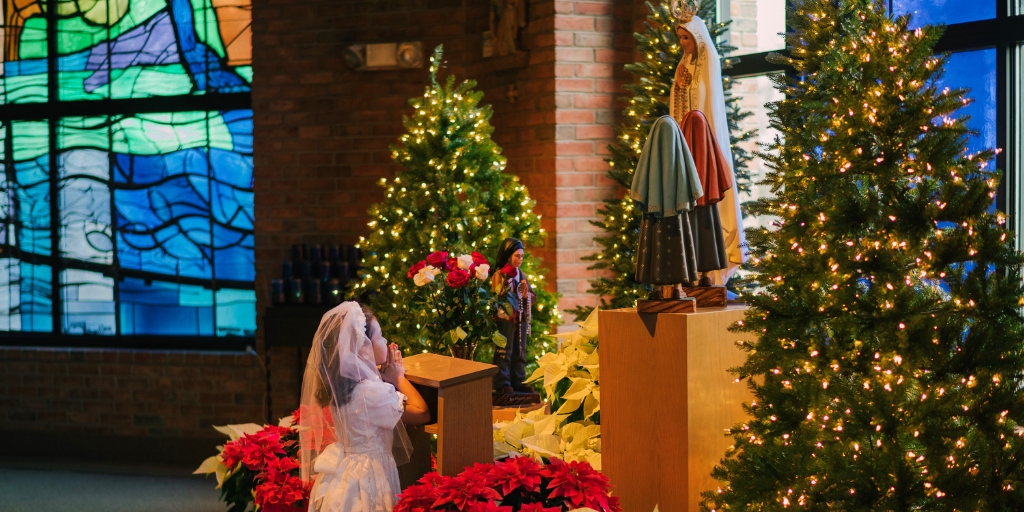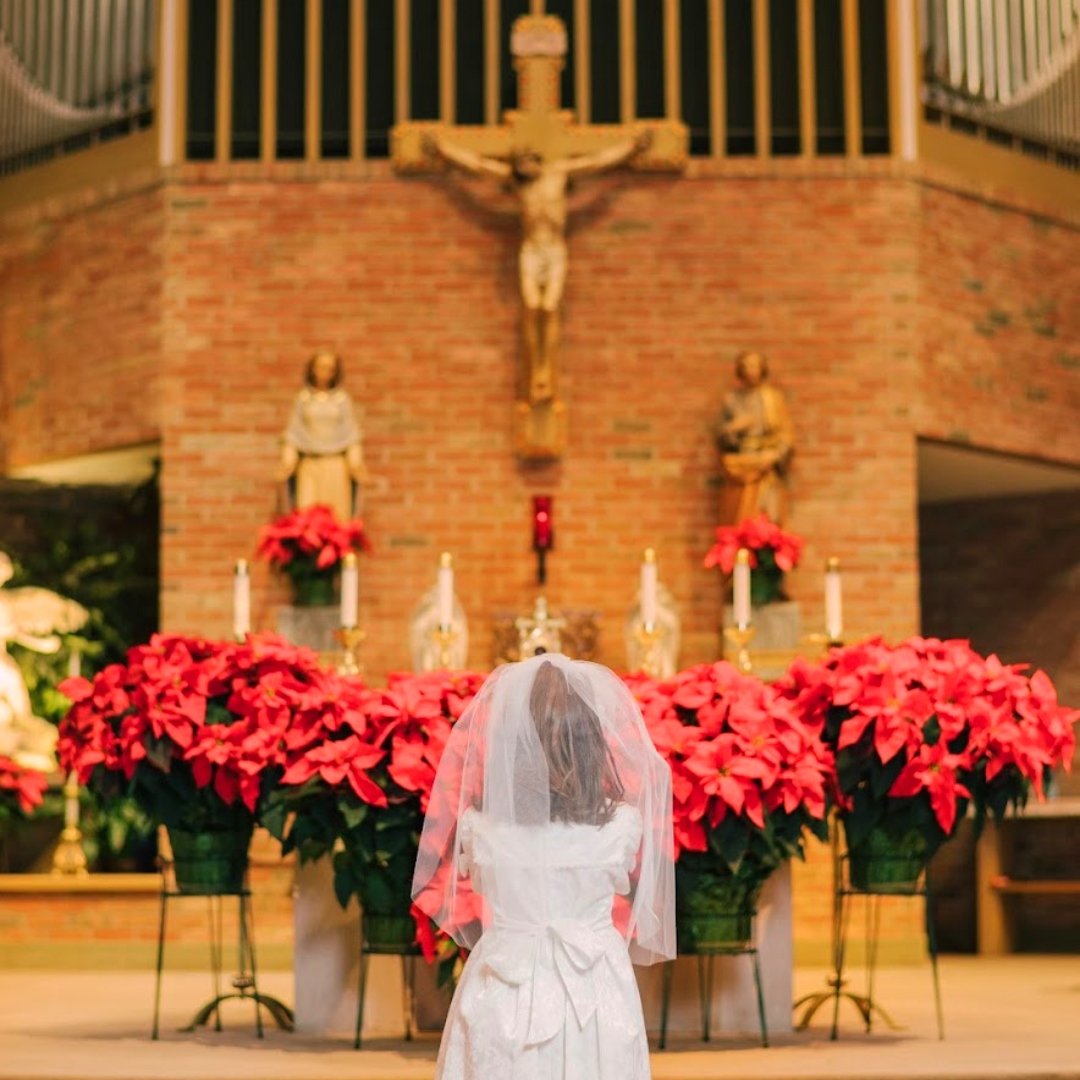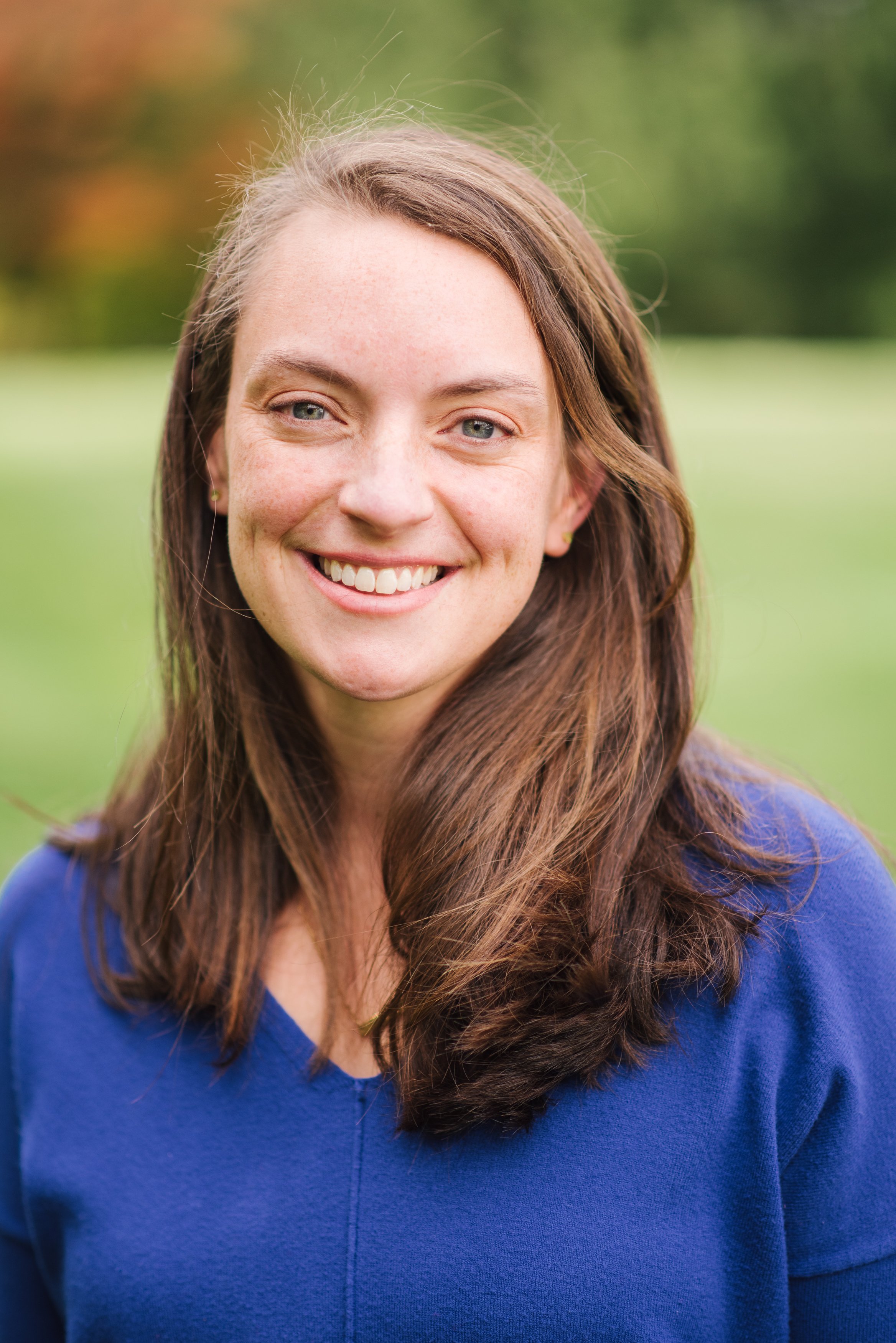
Lindsay Schlegel reflects on the beauty of the Eucharist in light of the Nativity.
I admit that I was skeptical when, last year, my priest suggested my daughter receive her First Holy Communion on Christmas Eve. True, a friend’s son had done the same on Christmas Day the year before, but I still wasn’t sure. People don’t come to Christmas Eve Mass expecting a little girl in a white dress to receive Jesus in the Eucharist for the first time. Would other folks be confused? Disappointed? Annoyed that the Mass might take longer?
“Won’t that kind of be stealing Christmas’ thunder?” I asked Father.
Thank goodness I have a priest who knows and loves me well enough not to kick me out of the sacristy right then.
“She’ll be receiving the greatest gift there is,” he assured me, “and it will be good for the rest of us to see that.”
My daughter’s reaction was devoid of skepticism and full of enthusiasm. She’d been asking to receive since her brother and cousin had made their First Communions in the spring. Part of me wanted to keep our family tradition of receiving on Divine Mercy Sunday, but another part of me wasn’t sure that was good enough reason to wait. Plus, if I wanted some kind of family tradition, my daughter was baptized on Divine Mercy Sunday. So there.
I wish I had a picture of her face when I told her she could make her First Communion at Christmas Eve Mass: the biggest smile, the purest delight, the utmost excitement. She smiles a lot, but rarely have I seen her infused with that much joy.
The Mass was only a few weeks away, but my priest, my husband, and I all knew she was ready and had been for a while. She knows with all her heart that Jesus is present Body, Blood, Soul, and Divinity in the Blessed Sacrament. When asked recently why she loved Jesus, she answered with ease, “Because He loved me first.” Who was I to prevent such a one as this from coming near to her Lord?
We worked through a workbook on the sacrament of Confession, which she understood, but didn’t practically know how to participate in. She received that Sacrament a week before Christmas. (This book was a huge help.) Her soul cleansed, and white shoes finally in hand—these are very hard to find in December, as it turns out!—she was ready to go.
So last Christmas Eve, my daughter wore the dress I wore when I received my First Holy Communion. She stood at the same altar I did, but she appreciated more than I did at that age. Father made mention of her in the homily, drawing the congregation’s attention to the incredible gift she was receiving—the same gift that all of us in a state of grace would receive that night. There was no thunder to be stolen.
Somehow, I had separated the Eucharist from Christmas in my mind. But the Eucharist is not just for Easter. It’s not just for Sundays. The Eucharist and the Nativity are two aspects of the same mystery—that of Christ coming to earth to save us from our sins. Yes, there is joy in the Incarnation, in the birth of the Christ Child, but this joy is not separate from the joy of Easter morning, nor is it separate from the suffering that came in between.
Santa hats and bunnies, reindeer and chicks may seem to be signs of two different movements in our spiritual lives. But the reality is that we can’t have one holy day without the other. My daughter taught me that last year. What a great gift.
A few days after Christmas, we asked a photographer to come take photos of our girl and our family, as we have with each of our older children. My daughter’s First Communion pictures do have the spring backdrop the others do. The flowers in her pictures are poinsettias. The lights are wrapped around evergreen branches. And her gaze is on her Lord in the manger, where He came to give her new life.

Copyright 2022 Lindsay Schlegel
Images: copyright 2021 Lindsay Schlegel, all rights reserved.
About the Author

Lindsay Schlegel
Lindsay Schlegel is a daughter of God, wife, mom, editor, and speaker. She’s the author of Don’t Forget to Say Thank You: And Other Parenting Lessons That Brought Me Closer to God and host of the podcast Quote Me with Lindsay Schlegel. Lindsay seeks to encourage, inspire, and lift others up to be all they were created to be. Connect with Lindsay at her website, LindsaySchlegel.com.


.png?width=1806&height=731&name=CatholicMom_hcfm_logo1_pos_871c_2728c%20(002).png)
Comments